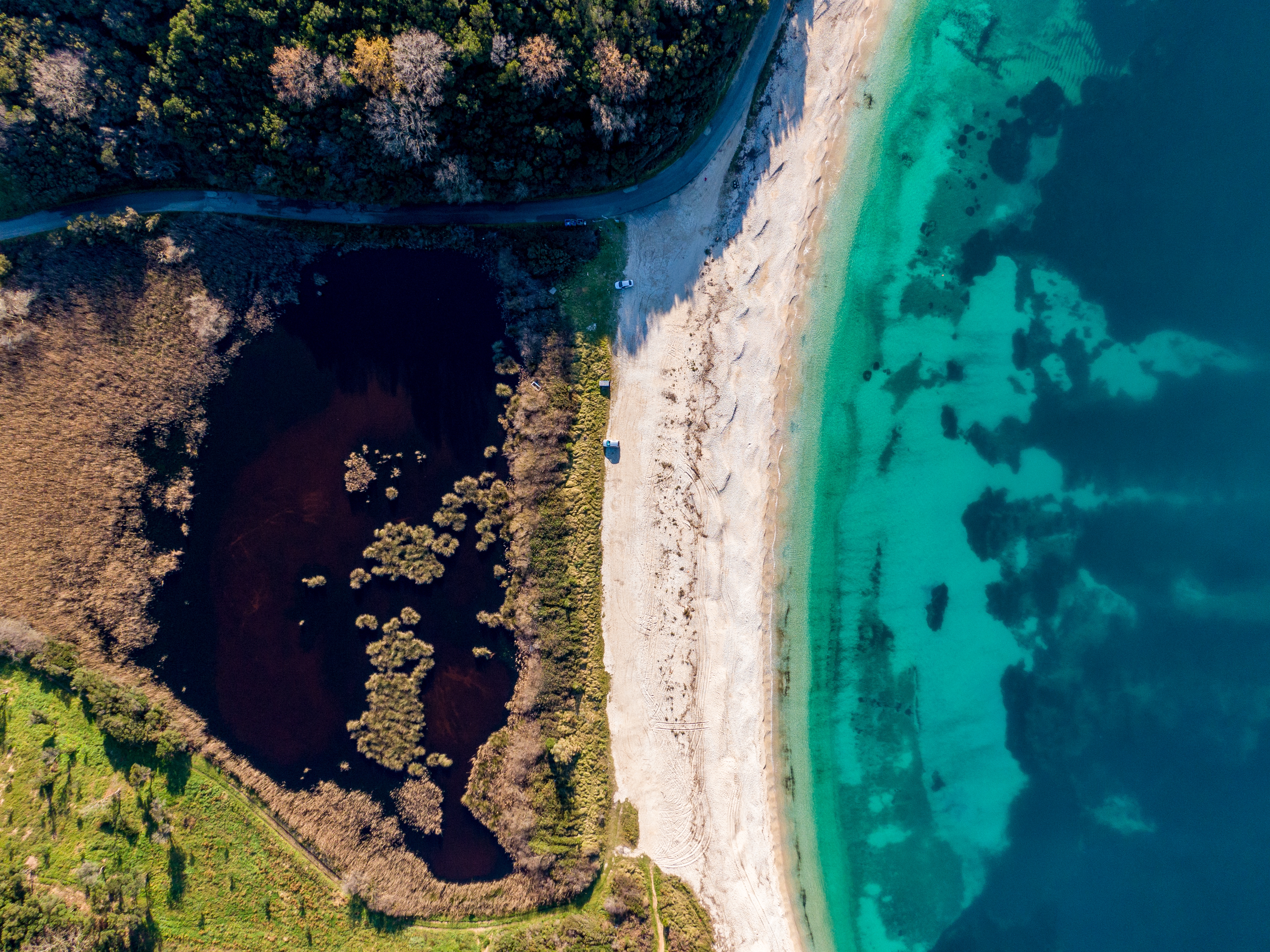SURROUNDINGS
REON’s base is located in Porta village of North-eastern Corfu. Porta is surrounded by numerous small settlements of authentic and simple character like Tritsi, Agnitsini, Kokkini, Meggoulas and more well-known Rou, known as the english district village. With a mix of modest, traditional and luxurious homes and villas, the scenery also encompasses endless olive groves, narrow streets, Mount Pantokrator - the highest mountain of Corfu and alluring views of the sea and of the Albanian mountains right across. Other points of interest include Palies Sinies︎︎︎, Old Peritheia︎︎︎, a mushroom festival during winter time and numerous beaches ranging from the more organized, to the more secluded. Close by also lies the popular village of Agios Stefanos with the old fisherman’s marina and the larger touristic village of Kassiopi with various supermarkets, shops & restaurants.

Aerial drone view of transmission systems on top of mountain Pantokrator, Corfu
 Aerial drone view of Avlaki beach & Savoura lake
Aerial drone view of Avlaki beach & Savoura lakeERIMITIS
A luscious and until recently intact ecosystem in the north-eastern part of the island with six beaches, coves, capes and 3 lakes, forming wetlands with coastal rocks, phrygana, marshes and Corfiot indigenous vegetation such as macchia and wild orchids. The rich biodiversity of the area also includes many species of fungi.
Erimitis is also home and a passage area to various rare birds and animals like the lutra lutra otter, the monachus monachus seal a.o. The area spanning 150 ha and including the nearest point within a distance of about 2 km. to the Albanian coast, is located between Agios Stefanos in Sinies and Avlaki beach. It is accessible only by foot through paths or by boat.

Aerial drone view of Old Perithia, Corfu's oldest abandoned village, close to Mount Pantokrator, Sinies, Corfu
︎

Girl carrying water, circa 1930, Corfu
Img source︎︎︎
Img source︎︎︎
CORFIOT CERAMICS
The oldest pottery objects in Corfu were found around 6,000 BC in the northern part of the island. During the Venetian occupation and during the fortification of the old town and afterwards (1550-1625 AC), intense building activity develops with a significant number of houses being built inside the limits of the walls. There is a strong demand for bricks, tiles and ceramic everyday objects (water & wine jugs, dishes, pots, vases, water heaters, flower pots) but also oil jars as the oil trade flourishes in the area thanks to the Levante trade. Local clay runs in abundance, and workshops, craft industries and kilns grow both in the city and in the countryside.
After the end of World War II, Corfu was rebuilt thanks to its (lime) kilns with many of the houses built during this period still standing in the city of Corfu. With the introduction of new industrialized materials and products from other markets, local ceramic production of utility ceramics gradually declines and the production focuses at building ceramic materials.

Street Vendor, circa 1900, Corfu
img: Alois Beer
